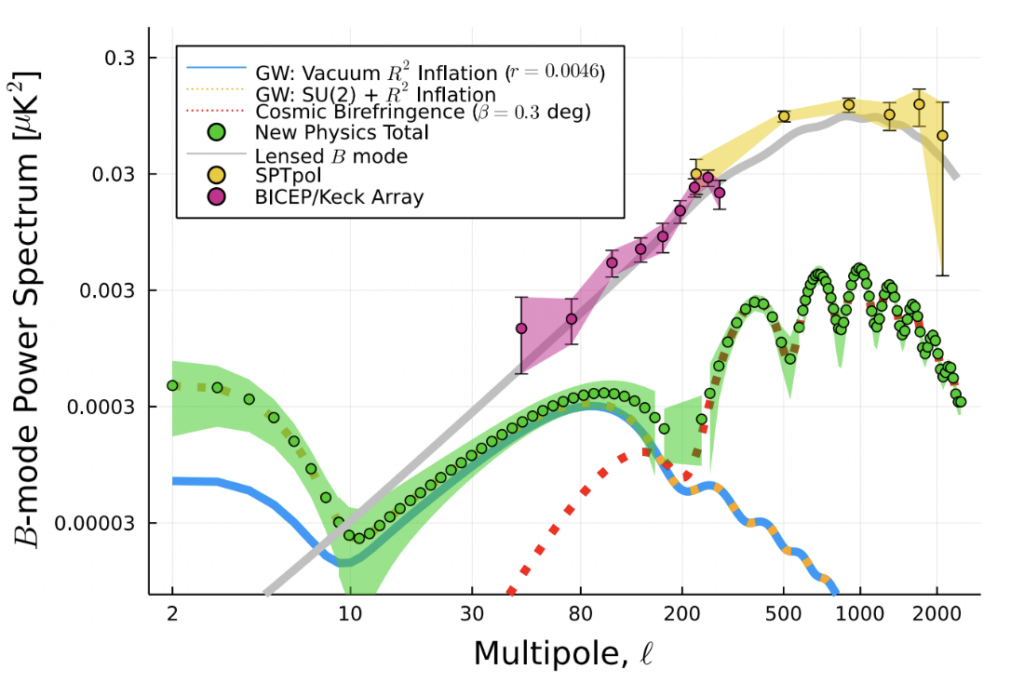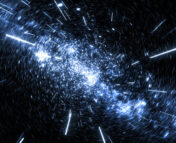Title: New physics from the polarised light of the cosmic microwave background
Authors: Eiichiro Komatsu
First Author’s Institution: Max-Planck-Institut für Astrophysik, Karl-Schwarzschild Str. 1, 85741 Garching, Germany
Status: Submitted to ArXiv [28 Feb 2022]
Astronomers have painted an extraordinary picture of our Universe with the standard cosmological model, ΛCDM. The only problem is that astronomers don’t exactly know what ΛCDM really is. What is dark energy and dark matter? What is the physics behind inflation? The answers to these fundamental questions in cosmology could be hidden right inside your T.V.
The cosmic microwave background (CMB) is leftover radiation from the Big Bang. It’s some of the oldest light in the Universe, and yes, you can see that light in T.V. static! The CMB is rich with data that carries profound information about cosmology just waiting to be understood, but most important for our discussion today are the properties of the CMB’s polarization.
Can You See Dark Matter and Dark Energy?

First, let’s try and answer our first question: what is the nature of dark matter and dark energy? When the CMB was formed around 380,000 years after the Big Bang, the Universe was hot, dense, and filled with electrons. As photons from the CMB made their long journey towards us, they scattered off of these electrons. From these scattering interactions at the appropriately named surface of last scattering, CMB photons naturally got linearly polarized at some specific angle, and some astronomers are on the hunt for a rotation of this initial polarization angle, called cosmic birefringence. This is exactly like the birefringence of a crystal, as light passing through a crystal can also be deflected at an angle relative to its initial path. The biggest difference between these two types of birefringence is merely that the photons from the CMB are polarized due to an energy field rather than a crystal. Some astronomers theorize that this energy field could be related to dark matter and dark energy, so a detection of this cosmic birefringence could tell us a lot about the ‘dark side’ of cosmology. Not only would a detection rule out Einstein’s cosmological constant as the origin of dark energy, but it would also tell us about the physics behind it. Also, since cosmic birefringence isn’t predicted by the standard ΛCDM cosmological model, it would also provide evidence for entirely new physics!
Through the analysis of Planck polarization data, the author of today’s paper have found a tantalizing hint for cosmic birefringence. By using the latest reprocessing of Planck data, the author found a weak signal of cosmic birefringence corresponding to an angle of β = 0.30°± 0.11°. However, while this is an exciting result, it is not conclusive enough to call this a true detection of cosmic birefringence just yet. This is due to limitations in the precision of the measurements of the initial rotation angle, along with other possible systematic effects.
Can You See Inflation?
So, we haven’t detected cosmic birefringence, and we still don’t fully understand the nature of dark matter and dark energy. But what about inflation? While data from the CMB already provides support for inflation, astronomers are still on the lookout for a key piece of evidence in support of inflation: B-modes. Polarization angles from the CMB can be deconstructed into two types of modes: E-modes, which describe parallel or perpendicular angles, and B-modes, which describe 45° angles. B-modes are important proof of the inflationary model as the gravitational waves produced by inflation are the dominant contributor to B-modes. A detection of these B-modes would not only provide strong evidence for inflation, but also provide information about the physics behind it through analysis of their shape and properties. Although these modes also haven’t been detected yet, by using one potential model of inflation, today’s author has shown that their detection may be possible. (see Figure 2).

The CMB in the Future
So, have we seen new physics in the CMB yet? Unfortunately, not quite—detecting cosmic birefringence or B-modes, as you have seen, is no easy task. Even small errors due to contamination, miscalibration, and systematic uncertainties can render these signals undetectable. However, the future looks bright. The noise level for CMB experiments has dropped nearly exponentially with time, and new CMB experiments such as SPT-4, CMB Stage-4, the Simons Observatory, JAXA and LiteBird are set to come online in the next decade. With new high-precision data on the horizon, and a little innovation, we may start to find the answers to these ambitious questions, so keep on the look out for these new results. Who knows, maybe we’ll find new physics along the way too!
Astrobite edited by Pratik Gandhi
Featured image credit: European Space Agency, Planck Collaboration




